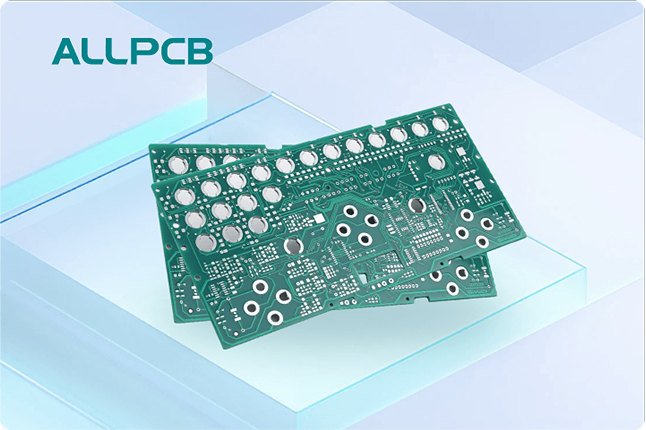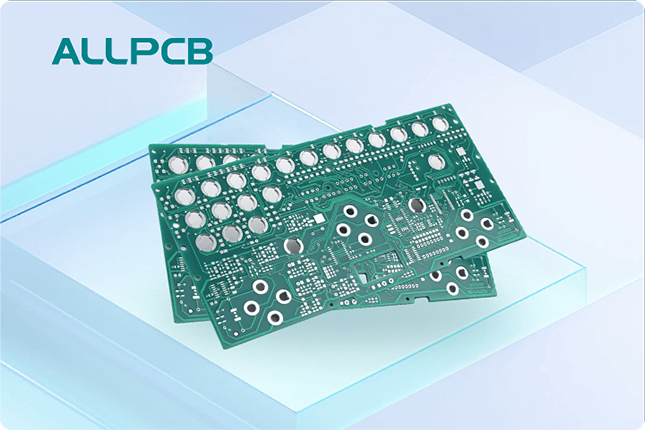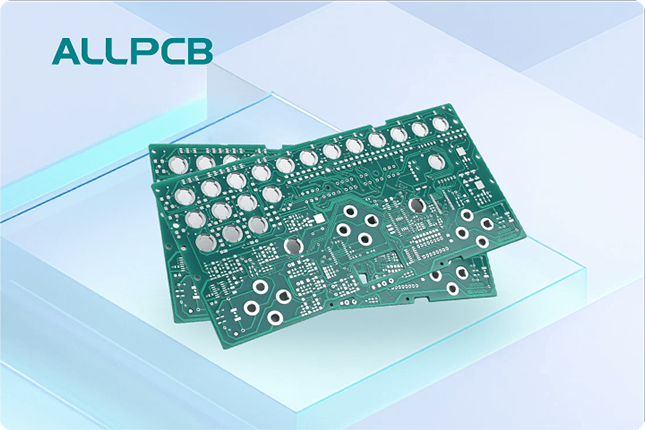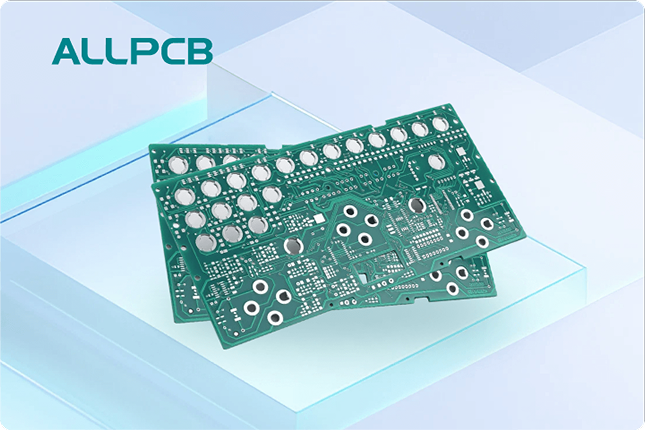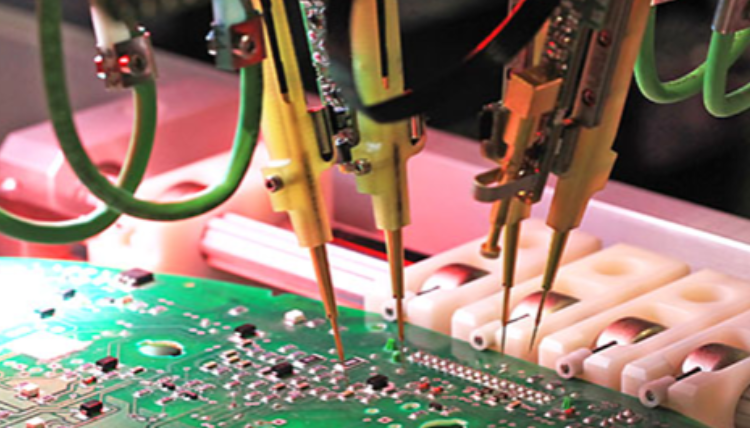In the world of electronics, managing heat is a critical challenge, especially for high-power applications. Aluminum-backed PCBs, also known as Metal Core PCBs (MCPCBs), offer an effective solution for thermal management. If you're searching for insights on aluminum PCB thermal conductivity, aluminum PCB heat dissipation, metal core PCB design, or the MCPCB manufacturing process, you've come to the right place. This guide provides a detailed look into how aluminum-backed PCBs work, their benefits, and the steps involved in their production to help you achieve optimal performance in your projects.
At ALLPCB, we understand the importance of efficient heat dissipation in modern electronics. This comprehensive guide will walk you through everything you need to know about aluminum-backed PCBs, from their design principles to manufacturing techniques, ensuring your designs stay cool under pressure.
What Are Aluminum-Backed PCBs and Why Are They Important?
Aluminum-backed PCBs are a type of printed circuit board that uses a metal base, typically aluminum, instead of the traditional fiberglass material like FR4. The aluminum layer acts as a heat sink, drawing heat away from critical components and dissipating it efficiently. This makes them ideal for applications like LED lighting, power electronics, automotive systems, and other high-power devices where heat buildup can damage components or reduce performance.
The primary reason aluminum-backed PCBs are so important is their superior thermal conductivity. For instance, while standard FR4 materials have a thermal conductivity of around 0.3 W/mK, aluminum offers a thermal conductivity of approximately 200-250 W/mK. This massive difference allows aluminum PCBs to handle heat dissipation far more effectively, ensuring reliability and longevity for electronic devices.
Key Benefits of Aluminum PCBs for Thermal Management
Understanding why aluminum PCBs are a go-to choice for thermal management involves looking at their specific advantages. Here are the key benefits that make them stand out:
- High Thermal Conductivity: As mentioned earlier, aluminum's thermal conductivity (around 200-250 W/mK) is significantly higher than traditional materials. This allows heat to transfer quickly away from sensitive components.
- Improved Heat Dissipation: The metal core acts as a built-in heat sink, spreading heat across a larger surface area and reducing hotspots on the board.
- Durability and Reliability: Aluminum is lightweight yet strong, providing mechanical stability to the PCB while resisting thermal stress and warping.
- Compact Design: Efficient heat dissipation means you can design smaller, more compact boards without worrying about overheating issues.
- Cost-Effective for High-Power Applications: While aluminum PCBs may have a higher upfront cost compared to standard materials, their ability to extend component life and prevent failures makes them a cost-effective choice in the long run.
These benefits make aluminum-backed PCBs a preferred option for industries where thermal management is non-negotiable, such as in LED lighting systems where heat can degrade performance if not managed properly.
Understanding Aluminum PCB Thermal Conductivity
Thermal conductivity is a measure of how well a material can conduct heat, and it’s a cornerstone of why aluminum PCBs excel in heat dissipation. Measured in watts per meter-kelvin (W/mK), thermal conductivity indicates the rate at which heat passes through a material. For aluminum, this value ranges between 200 and 250 W/mK, depending on the alloy used. In contrast, traditional PCB materials like FR4 have a thermal conductivity of just 0.3 to 0.5 W/mK, making them unsuitable for high-power applications.
The high thermal conductivity of aluminum means that heat generated by components like power transistors or LEDs is quickly transferred through the metal core and spread out or dissipated into the environment. This prevents localized overheating, which can cause component failure or reduced efficiency. For example, in an LED lighting application, an aluminum PCB can keep junction temperatures below critical thresholds (often around 100-120°C), ensuring consistent brightness and lifespan.
Aluminum PCB Heat Dissipation: How It Works
Heat dissipation in aluminum PCBs relies on the metal core's ability to act as a thermal conductor and heat sink. Here's a breakdown of how this process works:
- Heat Generation: Electronic components on the PCB, such as power ICs or LEDs, generate heat during operation.
- Heat Transfer: The heat travels through a thin dielectric layer (an insulating material with good thermal conductivity, often around 1-2 W/mK) to the aluminum base.
- Heat Spreading: The aluminum core spreads the heat across its surface, preventing hotspots and ensuring even distribution.
- Heat Dissipation: The heat is then released into the surrounding environment, often aided by additional heat sinks or cooling systems attached to the aluminum base.
This efficient heat dissipation mechanism is crucial for maintaining the performance and reliability of high-power electronics. For instance, in automotive power modules, aluminum PCBs can handle heat loads from currents exceeding 50 amps, keeping temperatures within safe limits even under demanding conditions.
Metal Core PCB Design: Key Considerations
Designing a metal core PCB (MCPCB) requires careful planning to maximize its thermal management capabilities. Below are some critical factors to consider during the design phase:
1. Layer Stack-Up
A typical aluminum-backed PCB consists of three main layers:
- Copper Layer: This is the top layer where the circuit is etched. It conducts electricity and connects components.
- Dielectric Layer: A thermally conductive but electrically insulating layer sits between the copper and aluminum. Its thickness (often 0.1-0.2 mm) and material properties affect heat transfer efficiency.
- Aluminum Base: The bottom layer, usually 1-3 mm thick, serves as the primary heat sink.
Choosing the right dielectric material and thickness is crucial for balancing electrical insulation and thermal performance.
2. Component Placement
Place heat-generating components strategically to optimize heat flow to the aluminum core. Position high-power components near areas with direct access to the metal base for faster heat transfer.
3. Thermal Vias
Incorporate thermal vias—small holes filled with conductive material—near hot components to enhance heat transfer from the top layer to the aluminum base. For example, a grid of thermal vias under a high-power LED can reduce thermal resistance by up to 30%.
4. Heat Sink Integration
Design the PCB to accommodate additional heat sinks or cooling solutions if needed. Ensure the aluminum base has sufficient surface area for mounting these cooling elements.
MCPCB Manufacturing Process: Step-by-Step Guide
The manufacturing process for aluminum-backed PCBs is more specialized than that of standard PCBs due to the inclusion of a metal core. Here's a detailed look at the steps involved in the MCPCB manufacturing process:
1. Material Preparation
The process begins with selecting high-quality materials. The aluminum base is chosen for its thermal conductivity and mechanical strength, typically with a thickness of 1-3 mm. The dielectric layer, often made from a thermally conductive epoxy or ceramic-filled material, is prepared to ensure proper insulation and heat transfer.
2. Copper Foil Lamination
A thin copper foil (usually 1-2 oz, or 35-70 micrometers thick) is laminated onto the dielectric layer. This copper will later be etched to form the circuit pattern. The lamination process uses heat and pressure to bond the layers securely to the aluminum base.
3. Circuit Pattern Imaging
The desired circuit pattern is transferred onto the copper layer using a photoresist coating and UV light exposure. This step defines where the copper will remain after etching.
4. Etching
Unwanted copper is removed through a chemical etching process, leaving behind the circuit traces. Precision is key here to ensure accurate electrical connections.
5. Drilling and Routing
Holes for components and vias are drilled into the board. Routing shapes the board to its final dimensions. Special care is taken when drilling through the aluminum layer to avoid damaging tools or the board.
6. Solder Mask and Silkscreen Application
A solder mask is applied to protect the copper traces and prevent short circuits. A silkscreen layer is added for labeling components and providing assembly instructions.
7. Surface Finish
A surface finish, such as HASL (Hot Air Solder Leveling) or ENIG (Electroless Nickel Immersion Gold), is applied to the copper traces to improve solderability and protect against oxidation.
8. Testing and Quality Control
Each board undergoes rigorous testing to check for electrical continuity, thermal performance, and structural integrity. For instance, thermal imaging may be used to verify heat dissipation efficiency across the board.
Applications of Aluminum-Backed PCBs
Aluminum-backed PCBs are widely used in industries where thermal management is critical. Some common applications include:
- LED Lighting: High-power LEDs generate significant heat, and aluminum PCBs help maintain performance by keeping temperatures low.
- Power Electronics: Converters, inverters, and power supplies benefit from the heat dissipation properties of aluminum PCBs.
- Automotive Systems: Electronic control units (ECUs) and power modules in vehicles rely on MCPCBs for reliability under harsh conditions.
- Medical Devices: Equipment like high-power imaging systems uses aluminum PCBs to manage heat and ensure consistent operation.
Challenges in Aluminum PCB Manufacturing and Design
While aluminum-backed PCBs offer excellent thermal management, they come with certain challenges:
- Higher Cost: The materials and specialized manufacturing processes make MCPCBs more expensive than standard PCBs.
- Design Complexity: Integrating a metal core requires careful consideration of dielectric properties and thermal vias, adding to design time.
- Weight: Although aluminum is lightweight compared to other metals, it still adds more weight than traditional PCB materials like FR4.
- Drilling Difficulties: The hardness of aluminum can wear out tools faster during drilling, requiring specialized equipment.
Despite these challenges, the benefits of aluminum PCBs often outweigh the drawbacks, especially for high-power applications where heat dissipation is a priority.
Tips for Optimizing Thermal Performance in Aluminum PCB Designs
To get the most out of your aluminum-backed PCB, consider these practical tips during design and manufacturing:
- Use a dielectric layer with the highest possible thermal conductivity (look for materials rated at 1-3 W/mK or higher).
- Minimize the dielectric layer thickness to reduce thermal resistance, while ensuring sufficient electrical insulation.
- Maximize the surface area of the aluminum base exposed to air or attached to a heat sink for better heat dissipation.
- Simulate thermal performance using software tools to identify potential hotspots before manufacturing.
Conclusion: Why Choose Aluminum-Backed PCBs for Thermal Management?
Aluminum-backed PCBs, or MCPCBs, are a game-changer for thermal management in high-power electronics. With their exceptional aluminum PCB thermal conductivity and efficient aluminum PCB heat dissipation, they provide a reliable solution for preventing overheating and extending the lifespan of critical components. By understanding metal core PCB design principles and the MCPCB manufacturing process, you can create boards that meet the demands of modern applications, from LED lighting to automotive systems.
At ALLPCB, we're committed to helping you achieve optimal performance with cutting-edge PCB solutions. Whether you're designing for high-power applications or need support with thermal management, aluminum-backed PCBs offer the durability and efficiency you need. Dive into this technology and see how it can transform your projects with superior heat dissipation and reliability.
 ALLPCB
ALLPCB


